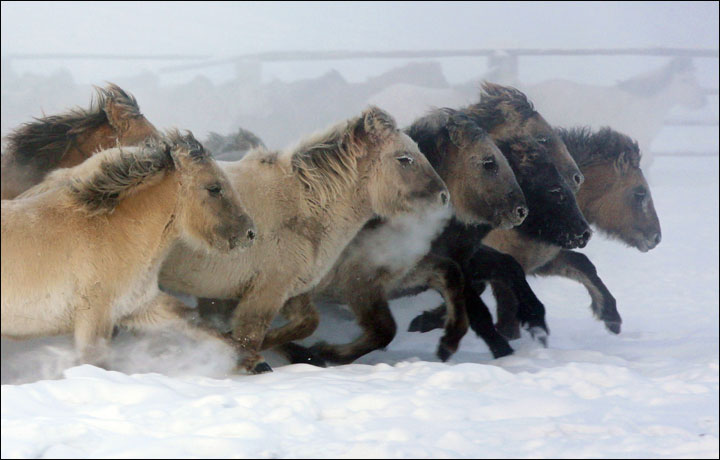
Posted on 11/29/2015 7:27:04 PM PST by TigerLikesRooster
Fast track evolution as great Siberian symbol is surprisingly unmasked as an immigrant breed.
Researchers say these horses, which seem so well attuned to the harsh cold with thick, dense winter coats, their armour against temperatures of minus 70C (minus 94F), are incomers that only arrived in these parts within the last 800 years. Picture: Maria Vasilyeva
The resilient Yakutian horses are one of the great native sights of the Sakha Republic - or Yakutia. In their way as much a part of the classic Siberian scenery as permafrost, extinct woolly mammoths, diamonds and Laika dogs in this kingdom of cold. Except that these horses are not really native.
Fascinating new scientific research has found that their seemingly built-in protection against extreme Arctic conditions is a recent phenomenon, at least by the normal tortoise-paced standards of evolution.
Researchers say these horses, which seem so well attuned to the harsh cold with thick, dense winter coats, their armour against temperatures of minus 70C (minus 94F), are incomers that only arrived in these parts within the last 800 years. Yet during that time, the requirement to survive has seen a quick-fire - almost overnight in relative terms - evolution by this species of horse.
Moreover, there was indeed a breed of horses native to this vast area of Russia, in which lie the coldest permanently inhabited communities on the planet. But these true native horses became extinct, at roughly the same time as the woolly mammoth and rhinoceros also died out, finally disappearing around 5,000 years ago.
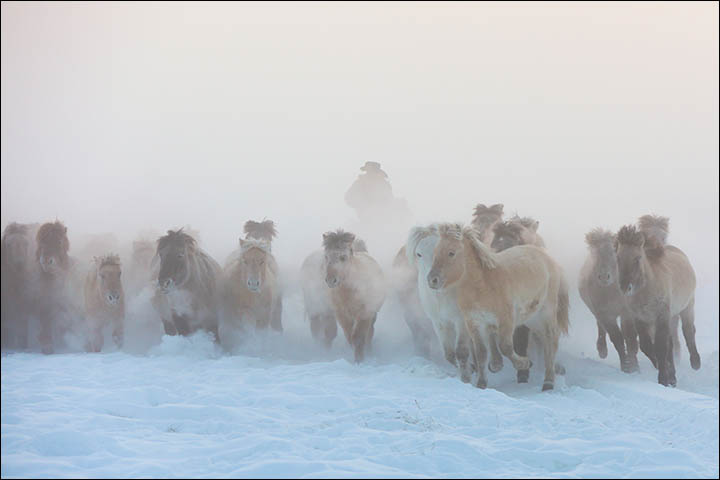
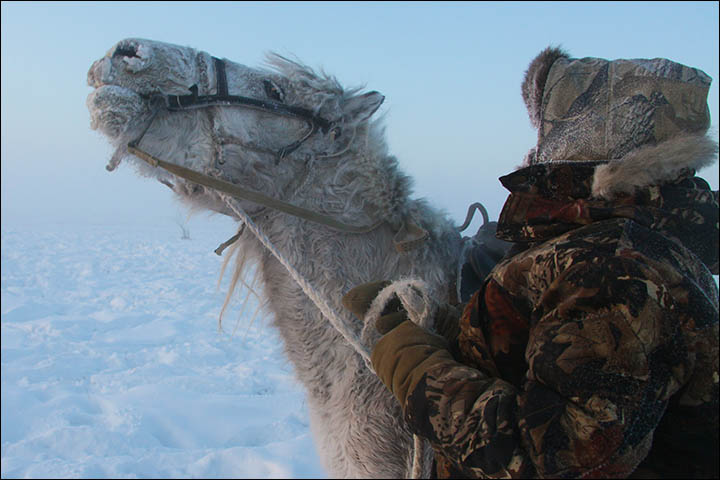
'This is truly amazing as it implies that all traits now seen in Yakutian horses are the product of very fast adaptive processes.' Pictures: Maria Vasilyeva
It transpires that a human population migrating within the last millennium to this land of ice - probably from Mongolia - brought horses with them, and these are the ancestors of today's distinctive Yakut horses, shown in our pictures.
'This is truly amazing as it implies that all traits now seen in Yakutian horses are the product of very fast adaptive processes, taking place in about 800 years,' explained Dr Ludovic Orlando, leader of an international team of scientists.
'This represents about 100 generations for horses. That shows how fast evolution can go when selective pressures for survival are as strong as in the extreme environment of Yakutia.'
The forebears of today's hardy horses are the domesticated stock of Mongolia, not the wild horses known to have roamed Yakutia in ancient times, a species that remains today only in fossil form. Yet these migrant horses were central to the lives of the population that settled in Yakutia: had these animals not coped with, and thrived on, the cold, these human societies would not have survived.
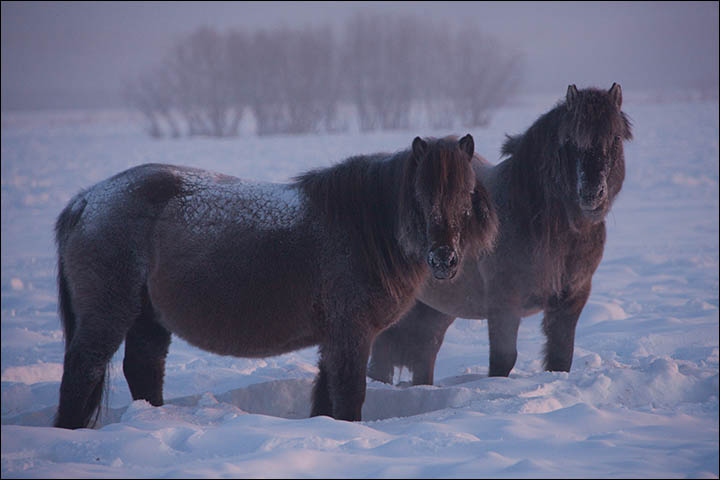
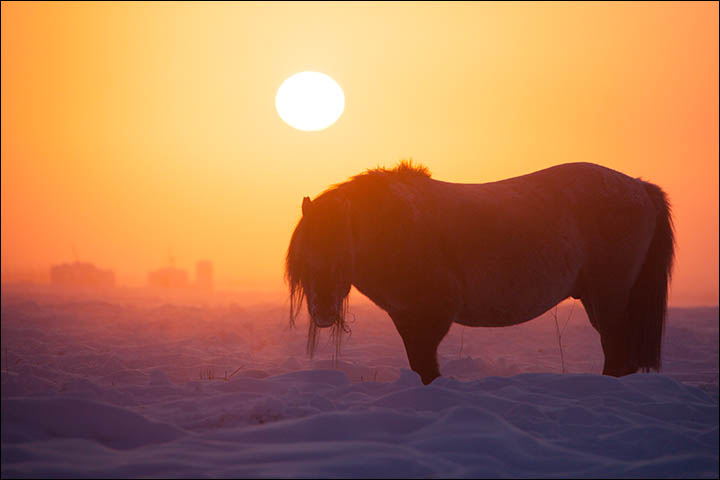
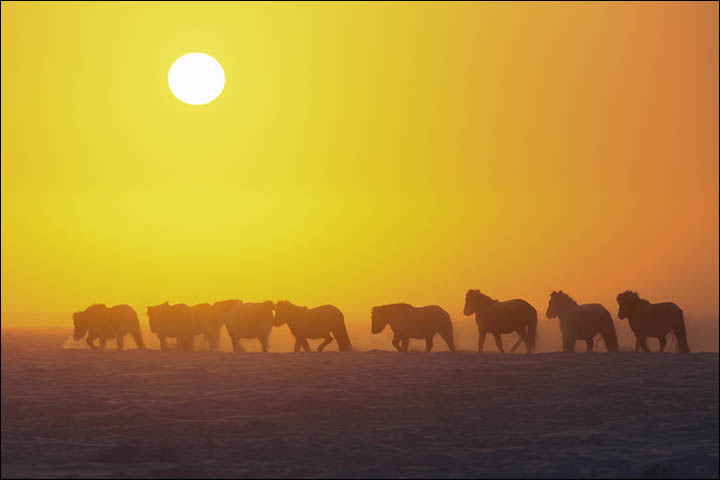
'In the genome of the Yakutian horses, we found the mutations that help the adaptation: revealed genes involved in the development of hair, affecting the body size, metabolic and hormonal signaling ways.' Pictures: Maria Vasilyeva
'We know now that the extinct population of wild horses survived in Yakutia until 5,200 years ago,' he said. 'It extended from the Taymir peninsula to Yakutia, and probably all across the entire Holarctic region. In Yakutia, it may have become extinct prior to the arrival of Yakut people and their horses. Judging from the genome data, modern Yakutian horses are no closer to the extinct population than is any other domesticated horse.'
The research pinpointed the genes responsible for this supersonic evolution, finding similarities with both indigenous Siberian people and even woolly mammoths. Among them TGM3, involved in hair development, which may be responsible for the Yakutian horse's distinctive shaggy look, a key to shielding them from cold living outside all year round. The adaptations, many of them regulatory, also involved vasoconstriction, body size, hormones, and metabolism.
Researcher Dr Pablo Librado said: 'In addition to unveiling their evolutionary origins, our approach helped narrow down the genetic basis of adaptations that are unique to Yakutian horses. In one word, their genetic makeup.
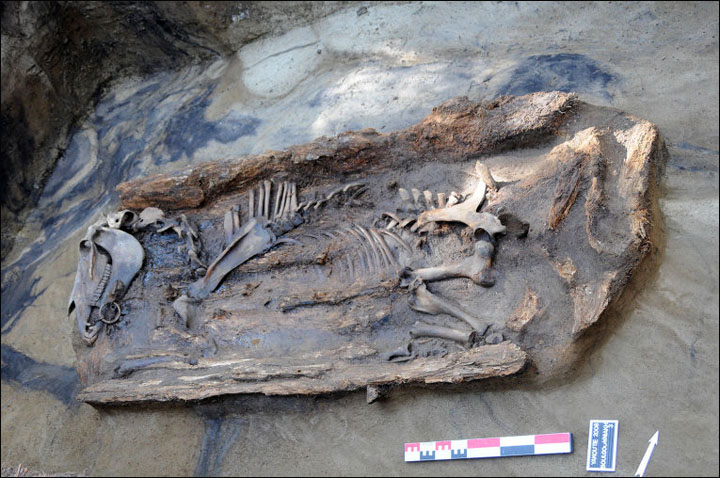
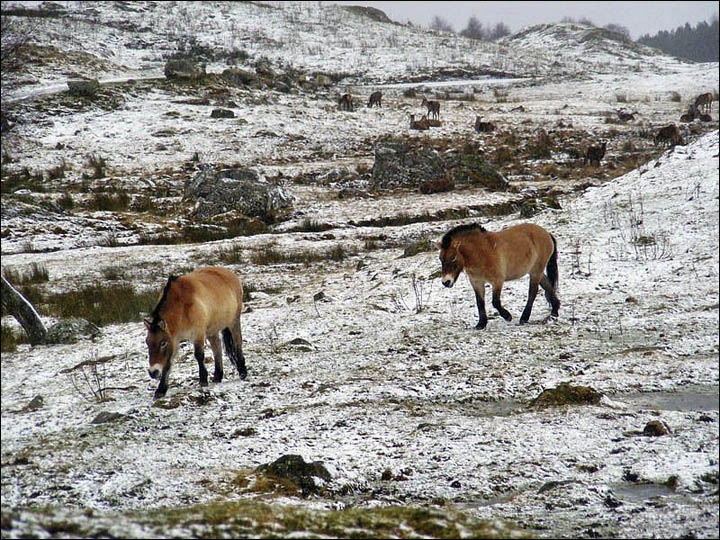
The geomes of modern-day horses and ancient horse samples from this region were compared to one another, and to existing sequences for dozens of domestic, still-wild Przewalski's, and ancient horses. Pictures: Patrice G/Proceedings of the National Academy of Sciences, floato
'We also found genes that were reported to have undergone selection in other Arctic populations, such as indigenous Siberian humans, and even the woolly mammoth. It provides a compelling example of evolutionary convergence, where unrelated groups exposed to similar environments end up independently developing similar adaptations.'
The research included genome sequencing on nine modern-day Yakutian horses, plus two ancient horse samples from this region, one from the early 19th century, and another 5,200 years old.
The genomes were then compared to one another, and to existing sequences for dozens of domestic, still-wild Przewalski's, and ancient horses. As for the earlier, extinct horses in this region, for example as seen in ancient remains on the Taymyr Peninsula, bore no close relationship to today's Yakutian horse population, and no more than to any modern breeds.
'The population from the Taymyr peninsula does not coincide with anything that paleontologists have ever described,' said Dr Orlando. This group is estimated to have diverged from the modern horse lineage around 160,000 years ago, the researchers estimate. They were as diverged from modern horses as humans are from Neanderthals, he said.

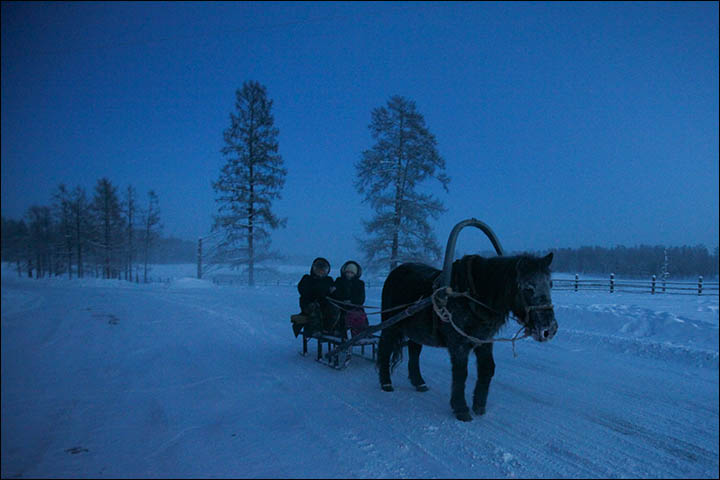
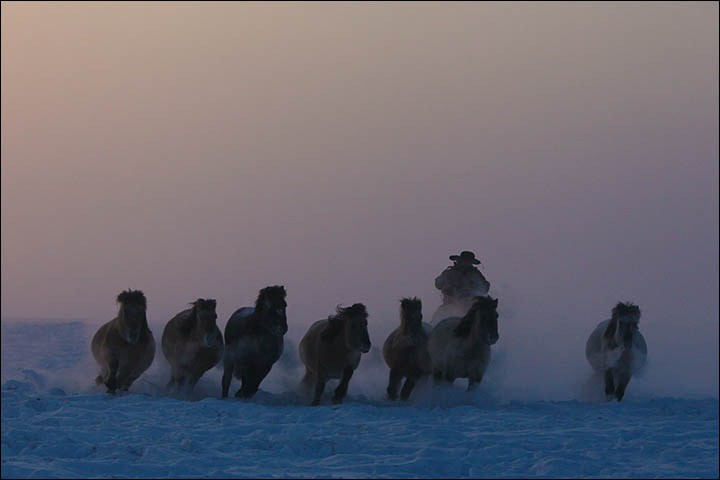
Yet these migrant horses were central to the lives of the population that settled in Yakutia: had these animals not coped with, and thrived on, the cold, these human societies would not have survived. Pictures: Maria Vasilyeva
Russian scientist Artem Nedoluzhko, head of the Laboratory of Bioinformatics and Genomics Research of Kurchatov Institute, in Moscow, who was involved in the research, said: 'We have shown that the Yakutian horse is one of the fastest cases of adaptation to the extreme Arctic temperatures.
'In the genome of the Yakutian horses, we found the mutations that help the adaptation: revealed genes involved in the development of hair, affecting the body size, metabolic and hormonal signaling ways. The changes found in the genome of Yakutian horses are an essential part of the adaptive genetic tools of the body.
'In addition, we found evidence of convergent evolution of the Yakutian horse with human populations that live in Siberia and mammoths, suggesting the existence of multiple evolutionary strategies needed to survive in extreme climatic conditions.'
Dr Orlando is from the Centre for GeoGenetics at the Natural History Museum of Denmark, part of the University of Copenhagen. Findings were published in the Proceedings of the National Academy of Sciences of the USA.
HORSEFEATHERS!
Interesting. They have some facial similarities to donkeys and buffalo IMO
So, this is how Russia squanders money on “studies” like we did in the study “Why so many lesbians are fat.”
Considering horses spend 16 hours a day out of 24 with their head down eating, this is amazing. My guess would be that they enjoy no competition for the sources of food they have adapted to. Also horses will dehydrate to death even in a snow pack without a source of running water to drink from. These horses have obviously overcome that trait as well.
“’This is truly amazing as it implies that all traits now seen in Yakutian horses are the product of very fast adaptive processes, taking place in about 800 years,’ “
No. This is merely proof that someone purposefully and very deliberately bred the horses over generations to increase their chances of surviving the cold.
That’s much more impressive than imaginary “fast adaptive processes”.
Third pic: I know a Tauntan when I see one.
That’s some fast adapters.
But there are other examples of very quick (in evolutionary terms) changes, even in people. For example, people in Siberia have very, very rich and thick blood, as do people in Bolivia (mountainous). The people in Bolivia’s mountainous regions are also very barrel-chested and actually look different in shape than other nearby peoples.
“So, this is how Russia squanders money on “studies” like we did in the study “Why so many lesbians are fat.”
I think that this is much more interesting.
What an inane, blithering crock! So they “evolved” to where they could srvive the cold over 800 years, did they? And how, may I ask, did the original arrivals from Mongolia survive the cold for the first 500 years or so.
Answer: God designed the original equine progenitors with the genetic potential to withstand cold when it is encountered; as well as withstanding heat, as Arabian horses do.
These fraudulent faux scientists should be laughed out of intelligent circles.
“Fascinating new scientific research has found that their seemingly built-in protection against extreme Arctic conditions is a recent phenomenon, at least by the normal tortoise-paced standards of evolution.”
Adaptation is not evolution.
Just how warm do you think Mongolia is?
Average temperatures over most of the country are below freezing from November through March and are about freezing in April and October. January and February averages of -20° C are common, with winter nights of -40° C occurring most years. Summer extremes reach as high as 38° C in the southern Gobi region and 33° C in Ulaanbaatar. More than half the country is covered by permafrost, which makes construction, road building, and mining difficult. All rivers and freshwater lakes freeze over in the winter, and smaller streams commonly freeze to the bottom. Ulaanbaatar lies at 1,351 meters above sea level in the valley of the Tuul Gol, a river. Located in the relatively well-watered north, it receives an annual average of 31 centimeters of precipitation, almost all of which falls in July and in August. Ulaanbaatar has an average annual temperature of -2.9°C and a frost-free period extending on the average from mid-June to late August.
www.countrystudies.us/mongolia/34.htm
Bingo! Don’t be so impudent in rejecting the common evolutionary fairy tale, you could get in trouble for that.

:-)
Thanks martin_fierro.
That’s the short neck variety.
Disclaimer: Opinions posted on Free Republic are those of the individual posters and do not necessarily represent the opinion of Free Republic or its management. All materials posted herein are protected by copyright law and the exemption for fair use of copyrighted works.